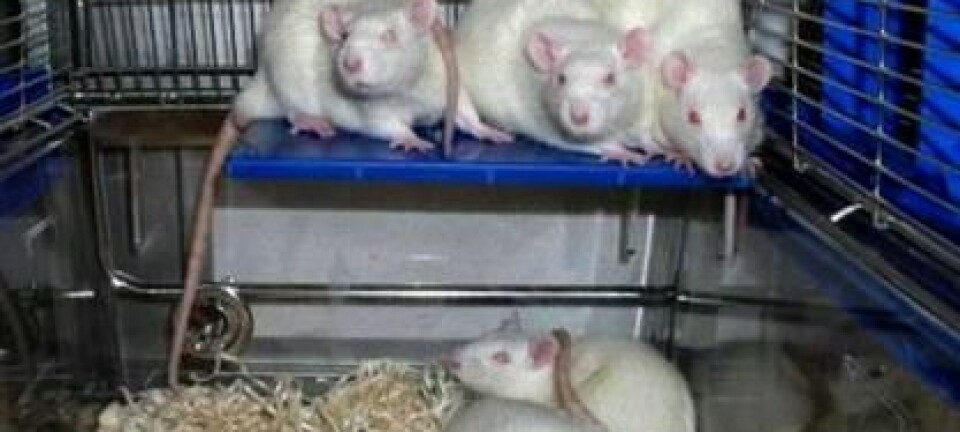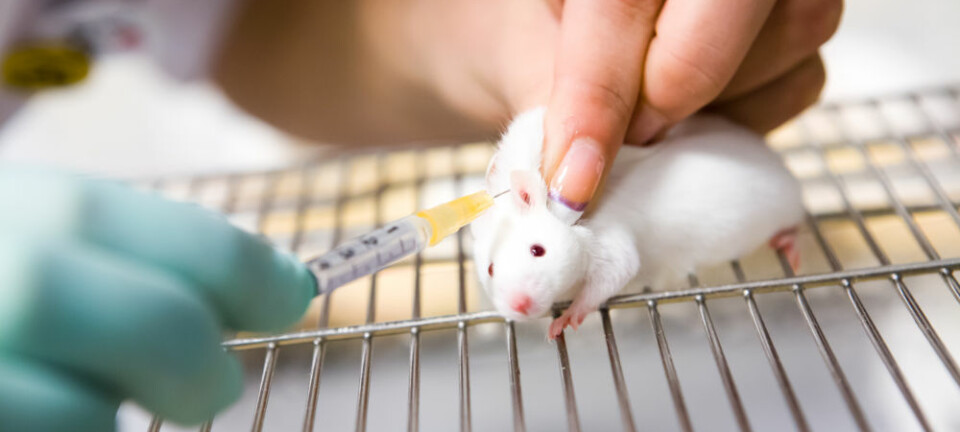
New method to detect toxin can replace animal testing
A chemical analysis can effectively detect botulism types, thus avoiding the need to sacrifice mice as part of the diagnostic process.
A group of Swedish and American scientists have found a new diagnostic method for detecting the toxin in foods that causes botulism.
“This could be a boon for animal welfare because the poisoning entails a lot of suffering” for test animals, says Annica Tevell Åberg, a researcher at the Swedish National Veterinary Institute (SVA) in a press release.
Cured ham and fermented fish
Botulism is caused by the Clostridium botulinum bacterium, which thrives in anaerobic conditions, meaning places where there is no oxygen. Spores of the bacteria are very common, and there are often very many in the soil.
Livestock can be poisoned if a dead mouse or rat winds up in a silo where feed is stored. Tinned and preserved foods can contain the toxin if they have been insufficiently heated during the canning process. Some of the most common contaminants for Norwegians are cured hams and the fermented and salted fish they love, called rakfisk. Parents are advised against feeding infants honey because of botulism, although the chance of honey sold in Norway being contaminated is slim.
The bacteria themselves are not directly harmful. But the toxin they produce can cause paralysis and death. In fact, botulism is the cause of the most dangerous toxin known, and the tiniest quantity can be deadly. Miniscule amounts of this toxin are injected into facial muscle tissue for cosmetic purposes ― under the well-known brand name Botox.
The poison destroys the nervous system by splitting certain proteins in neurons. The victim does not lose consciousness but loses the ability to move, and eventually the lungs can be affected, causing suffocation.
But if the disease is detected in an early stage the patient can be treated with an antitoxin.
Injecting mice
When botulism poisoning is suspected, the patient’s blood serum is injected into mice. Serum is the liquid left in the blood after a centrifuge has removed the red and white blood cells.
Seven types of the toxin are known and each requires the use of a different antitoxin.
To find out which of the toxins is doing the damage, so that the patient can be given the correct antitoxin, different mice are injected with the patient’s serum containing each of the seven antitoxins, while other mice are given the serum without the antidotes. The mice that die will thus tell doctors whether toxins are present and which types they are. Doctors then know what to use in treating the infected patient.
Sensitive method
In cooperation with scientists at the US Centers for Disease Control and Prevention in Atlanta, Georgia, SVA has developed a method of detection and chemical analysis of botulism using mass spectrometry.
“We need a highly sensitive method, because it only take a tiny amount (of the toxin) to make us extremely sick,” says Tevell Åberg.
This has been the major challenge in previous attempts to develop new ways of determining botulism types.
At least as effective
The Swedish-American method, which has been named Endopep-MS, involves the use of tiny magnetic spheres as well as antitoxins and synthetic peptides ― which are long chains of amino acids.
The suspected poison is collected in a sample as it sticks to antitoxins which are attached to magnetic spheres. These spheres are added to a solution of synthetic peptides, which are subsequently analysed.
The analysis reveals which samples contain split peptides, indicating the presence of the toxin.
This not only bypasses the need to conduct tests on rodents, it cuts the time needed to get results. The poisoning can be diagnosed in a day or two rather than taking as long as several weeks.
The researchers say this method is at least as accurate and reliable as tests on lab mice. It also requires less of the patient’s blood serum.
Promising
Bjarne Bergsjø, a researcher at the Norwegian Veterinary Institute, thinks the new method looks promising.
“If this test is quicker and more precise for the most common variations of the toxin, it saves time and labour and, importantly, prevents the suffering of test animals. The patient will be given specific treatment earlier,” he says.
“That said, it appears as if the test is not equally sensitive as the one on mice with regard to all the variations of the toxin. Nor can other test methods be used involving samples of vomit or tainted food or feed. It’s important to test food and animal feeds to find the source of the poisoning. This means that all testing on mice cannot be shelved. But it can be reduced if the new test method is adopted.”
Bergsjø thinks botulism is probably under-diagnosed in veterinary medicine because vets wait so long before conducting tests on mice, largely because it is such a costly and time-consuming undertaking.
“With an available and sensitive method that doesn’t entail the use of test animals, we can confirm our suspicions of botulism and at less cost,” he says.
Read the original article in Norwegian at forskning.no
Translated by: Glenn Ostling








